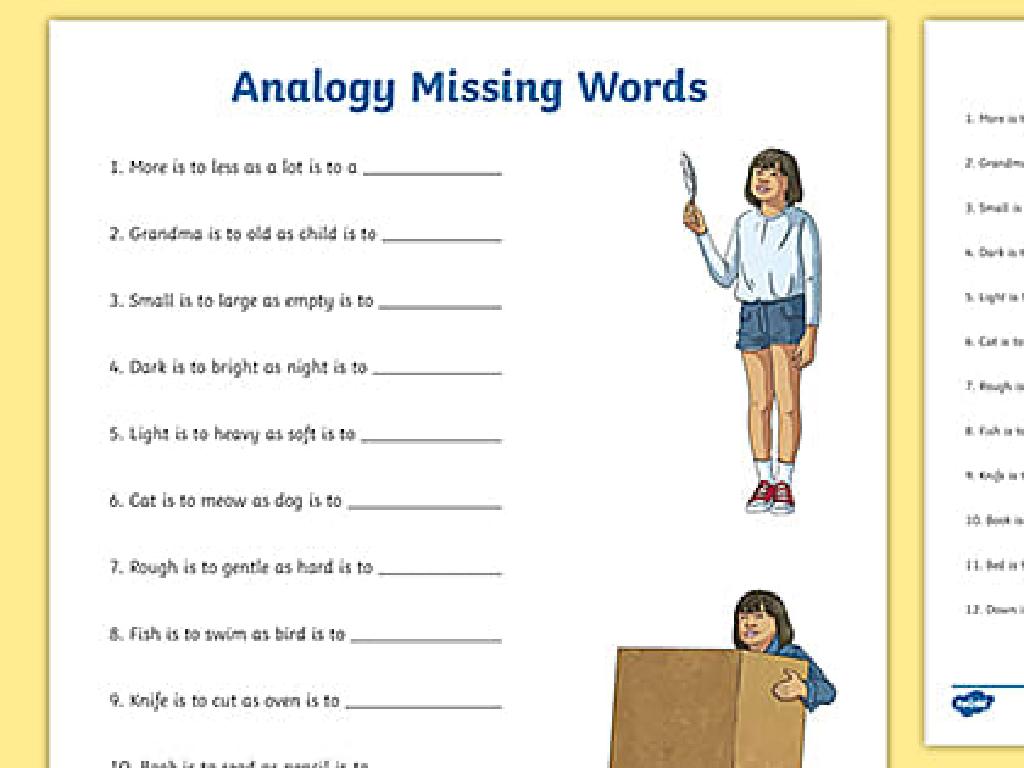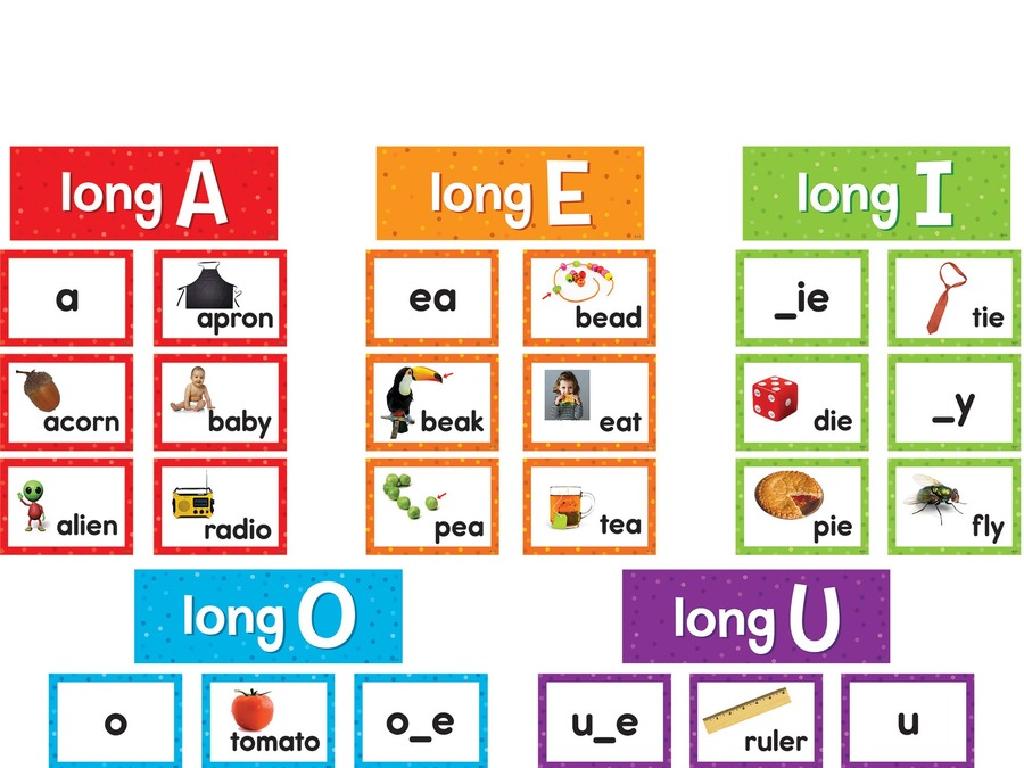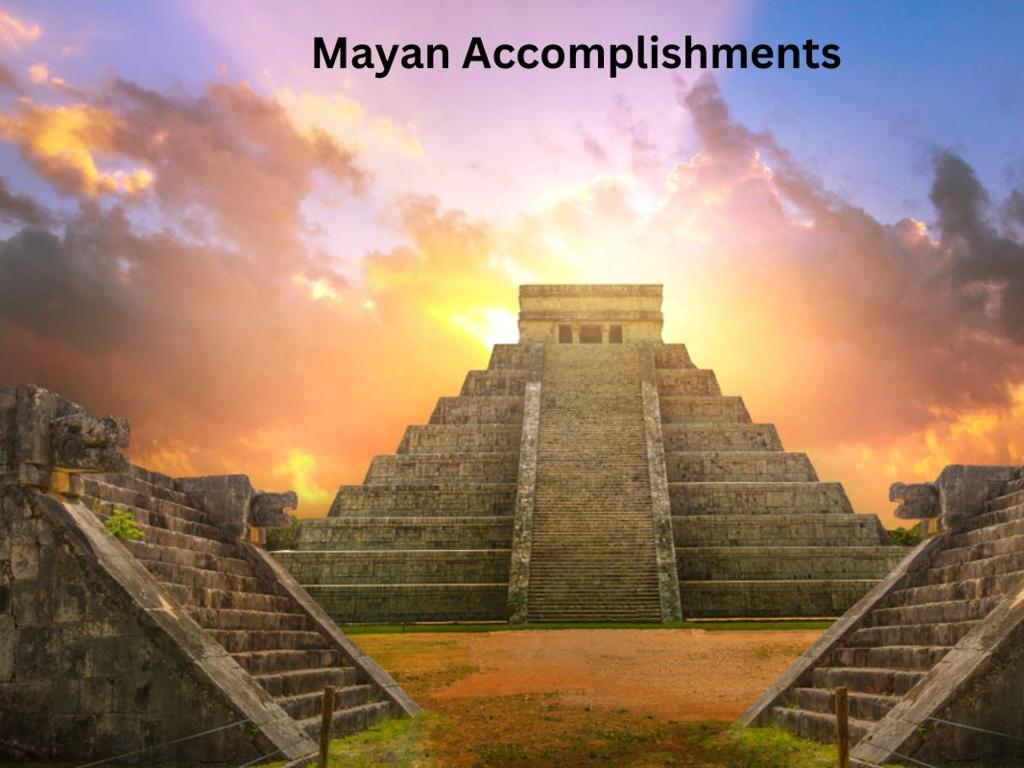Compare Ancient River Civilizations: Geography And Society
Subject: Social studies
Grade: Seventh grade
Topic: Comparing Ancient River Civilizations
Please LOG IN to download the presentation. Access is available to registered users only.
View More Content
Exploring Ancient River Civilizations
– Cradle of Civilization concept
– Birthplace of the earliest societies along rivers
– Geography’s impact on societies
– Rivers provided resources, trade routes, and fertile land
– Defining a civilization
– A complex society with cities, government, and culture
– Key terms in civilization study
– Terms like ‘culture’, ‘economy’, ‘society’, and ‘government’
|
This slide introduces students to the concept of the ‘Cradle of Civilization,’ where human societies first began to develop around fertile river valleys. Emphasize the importance of geography, particularly rivers, in shaping early societies by providing water, transportation, and fertile soil for agriculture. Discuss the criteria that define a civilization, such as urban development, organized government, and cultural structures. Introduce key terms that will be used throughout the unit to describe aspects of civilization. Encourage students to think about how geography can influence the development of a society and to consider the similarities and differences between ancient river civilizations and modern societies.
The Importance of Rivers in Ancient Civilizations
– Rivers: Ideal for settlement
– Access to water, fertile soil, and food sources.
– Rivers as societal lifelines
– Rivers supported growth and survival of societies.
– Agriculture’s reliance on rivers
– Irrigation boosted crop yields, sustaining populations.
– Rivers facilitating trade and travel
– Enabled movement of goods, people, and cultures.
|
This slide aims to highlight the critical role rivers played in the development of ancient civilizations. Students should understand that proximity to rivers offered numerous advantages, such as a steady water supply, fertile land for agriculture, and abundant resources for sustaining life. Rivers were the heart of many societies, providing a means for irrigation, which was essential for farming. Additionally, they served as natural highways for trade and transportation, allowing for the exchange of goods and ideas. Discuss examples like the Nile in Egypt, the Tigris and Euphrates in Mesopotamia, the Indus in India, and the Yellow River in China to give students a global perspective on the impact of rivers on ancient civilizations.
Mesopotamia: The Cradle of Civilization
– Geography of Mesopotamia
– Located between the Tigris and Euphrates rivers, fertile land.
– Society and culture overview
– Structured society with classes, rich religious beliefs.
– Mesopotamian innovations
– Invented the wheel, plow, and writing (cuneiform).
– Contributions to civilization
– Law codes, mathematics, and astronomy developed here.
|
This slide introduces students to Mesopotamia, known as the land between the Tigris and Euphrates rivers, which provided fertile soil for agriculture, leading to the rise of cities and complex societies. Discuss the ziggurats, the social hierarchy, and the pantheon of gods to give a glimpse into their culture. Highlight the significant innovations such as the wheel, which revolutionized transport, the plow for agriculture, and cuneiform as one of the earliest writing systems. Emphasize their contributions to law, with Hammurabi’s code, and their advancements in mathematics and astronomy, which influenced civilizations to come. Encourage students to think about how these innovations still impact us today.
Egypt: The Gift of the Nile
– Nile’s impact on society
– The Nile River’s floods made the land fertile, supporting agriculture and settlement.
– Pharaohs and Pyramids
– Rulers of Egypt built massive pyramids as tombs, showcasing architectural skill.
– Egyptian cultural insights
– Art, religion, and social structure were deeply influenced by the Nile’s bounty.
– Legacy of Egyptian advancements
– Innovations in writing, medicine, and engineering were significant contributions.
|
This slide explores the profound influence of the Nile River on ancient Egyptian society, culture, and legacy. The Nile’s predictable flooding patterns allowed for successful agriculture, which in turn supported a stable and prosperous civilization. Pharaohs, the god-kings of Egypt, commissioned the construction of pyramids, which remain as a testament to their culture’s architectural prowess. Egyptian society was rich with art and religious practices that celebrated the life-giving aspects of the Nile. Lastly, the advancements made by the Egyptians in various fields have left a lasting impact on the world, including the development of hieroglyphics, advancements in medical practices, and engineering feats. Encourage students to consider how geography can shape a civilization’s development and contribute to its lasting legacy.
Exploring the Indus Valley Civilization
– Geography of the Indus Valley
– Located in present-day Pakistan and northwest India, by the Indus River.
– Daily life of Indus inhabitants
– Farming, trading, and urban living were key aspects of daily life.
– Mysteries of the Indus civilization
– The script remains undeciphered, leaving many stories untold.
– Achievements of the Indus people
– Advanced city planning and metallurgy were notable accomplishments.
|
This slide aims to give students a glimpse into the Indus Valley Civilization, emphasizing its geography, society, enigmas, and accomplishments. The civilization thrived around the fertile flood plains of the Indus River, which supported agriculture and trade. Daily life was sophisticated with well-planned cities like Harappa and Mohenjo-Daro. Despite the civilization’s advancements in urban planning and craftsmanship, much about the Indus people remains a mystery due to their undeciphered script. Highlight their achievements such as the grid system of city planning, drainage systems, and the use of standardized weights and measures. Encourage students to consider how geography influenced the society and culture of the Indus Valley Civilization.
Ancient China: The Yellow River Civilization
– Yellow River’s historical impact
– The river’s floods were both a gift and a curse, shaping agriculture and society.
– Dynasties and the Mandate of Heaven
– The divine right to rule, granting power to the dynasties.
– Chinese innovations
– Inventions like paper and the compass changed the world.
– Cultural heritage significance
– Traditions like Confucianism and Taoism originated here.
|
This slide explores the Yellow River’s profound influence on the development of ancient Chinese civilization. Discuss how the frequent flooding of the Yellow River led to the development of sophisticated agricultural techniques and contributed to the centralization of power in early Chinese society. Explain the concept of the Mandate of Heaven, which justified the rule of the emperors and established a connection between heaven and the political hierarchy. Highlight key Chinese innovations, such as papermaking, printing, gunpowder, and the compass, which had a lasting impact on the world. Lastly, delve into the rich cultural heritage of China, including philosophical and religious traditions like Confucianism and Taoism, which continue to influence Chinese society today. Encourage students to think about how geography can shape a civilization’s development and how innovations and cultural practices can have a global impact.
Comparing Ancient River Civilizations
– Geography’s role in civilization
– Rivers provided resources and trade routes, but geography also influenced culture and defense.
– Societal structures across rivers
– Hierarchies and roles varied, yet many had rulers, priests, and farmers.
– Trade and writing systems
– Trade routes led to cultural exchanges, while writing systems varied from pictographs to cuneiform.
– Technological advancements
– Innovations like the wheel, plow, and bronze tools emerged differently in each civilization.
|
This slide aims to compare the ancient river civilizations such as those of the Nile, Tigris-Euphrates, Indus, and Yellow River. Emphasize how the geography of each river influenced the development of the civilizations that arose on their banks, including their culture, economy, and defense strategies. Discuss the societal structures, noting similarities like the presence of ruling classes and religious figures, as well as differences in social hierarchies. Highlight the importance of trade routes in facilitating cultural exchange and the development of distinct writing systems. Lastly, explore the technological advancements that were pivotal to each civilization’s development, such as agricultural tools and methods, transportation, and metallurgy. Encourage students to think about how these ancient civilizations have shaped modern society.
Class Activity: Create Your Civilization
– Imagine settling by a river
– Design a civilization map
– Include features like housing, farms, and markets
– Present your civilization’s features
– Highlight the river’s role in your civilization
– Discuss geography, society, innovations
– Share unique aspects that would make your society thrive
|
This activity encourages students to apply their knowledge of ancient river civilizations by designing their own. They should consider the geographical advantages of settling by a river, such as fertile land for agriculture and water for daily use. Students will create a map that includes essential elements of a civilization, like housing, farms, and trade centers. They will then present their civilization to the class, explaining how geography shaped their society and what innovations they would implement to address challenges. This activity fosters creativity, critical thinking, and understanding of how ancient civilizations utilized their environment. Possible activities include drawing maps, writing descriptions, and discussing as a class the different approaches students take in their designs.






